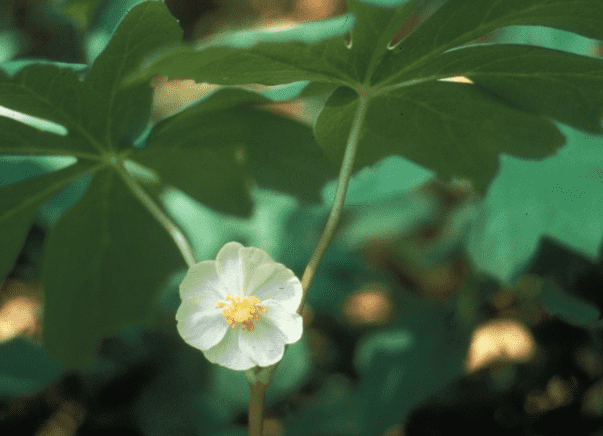
Mayapple (Podophyllum peltatum)
Mayapple, also known as American mandrake, Ground lemon
The mayapple (Podophyllum peltatum) is a distinctive perennial plant native to North America, characterized by its umbrella-like leaves and single white flower. This plant typically blooms in the spring, and its name reflects its early blooming period in the Northern Hemisphere and the apple-like appearance of its flowers.
**Characteristics:**
- **Leaves:** Large, umbrella-shaped, typically two per plant, can be toxic.
- **Flower:** A solitary white bloom, appearing in spring.
- **Fruit:** Yellow when fully ripe, edible in this state, but toxic when unripe.
**Potential Uses:**
- **Culinary:** The ripe fruit can be used in jams and jellies.
- **Medicinal:** Contains podophyllotoxin, utilized in anti-cancer therapies and wart treatments.
**Dangers:**
- **Toxicity:** Unripe fruit and other plant parts are poisonous, potentially causing symptoms like vomiting, diarrhea, and even coma.
- **Skin Irritation:** The sap can cause skin irritation upon contact.
Proper identification and careful handling are essential to safely use the mayapple plant, given its toxic properties.
Key Facts About Mayapple
Attributes of Mayapple
Scientific Classification of Mayapple
Toxicity
Ingestion